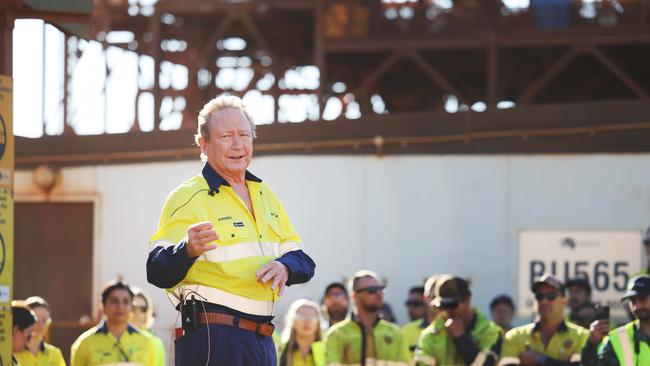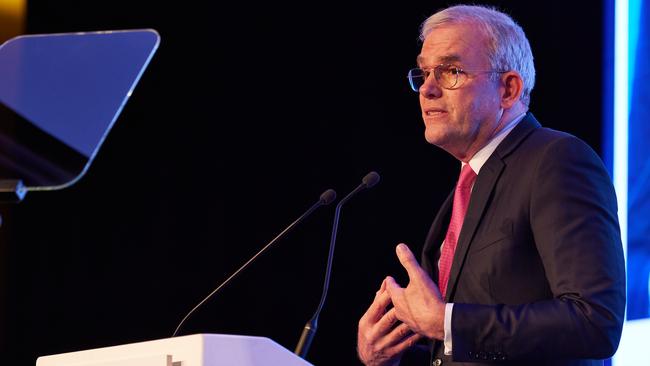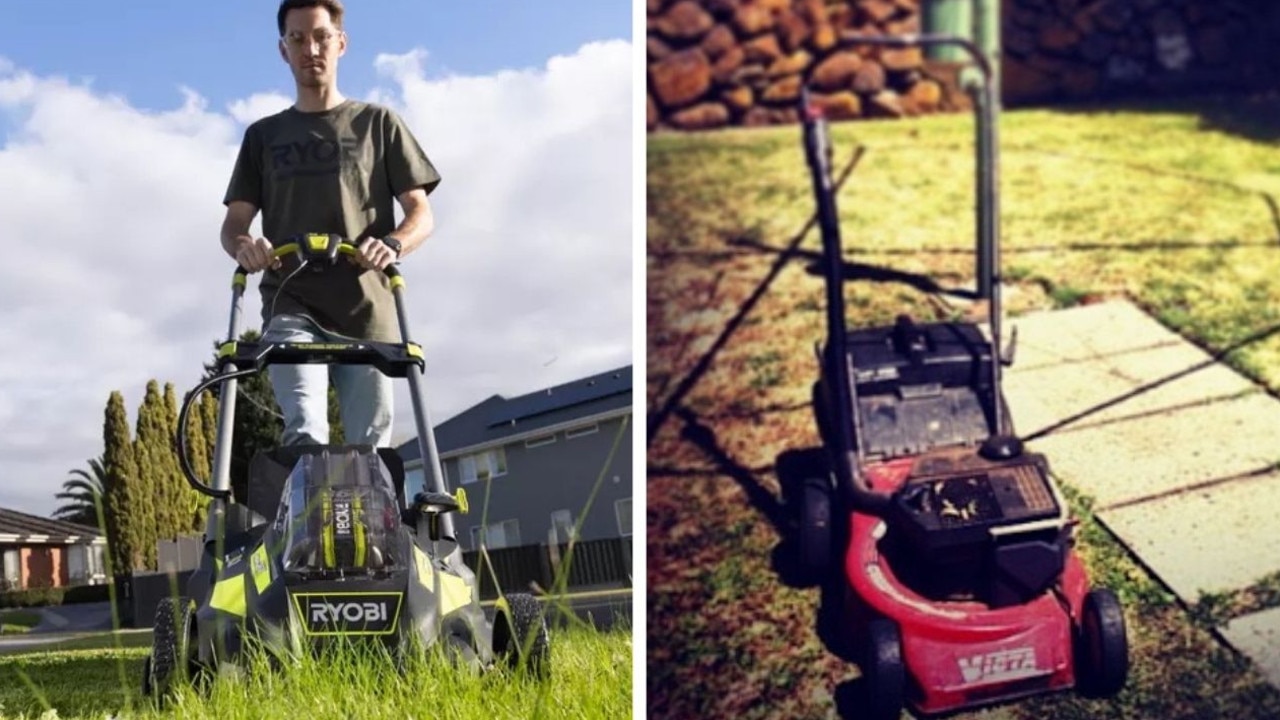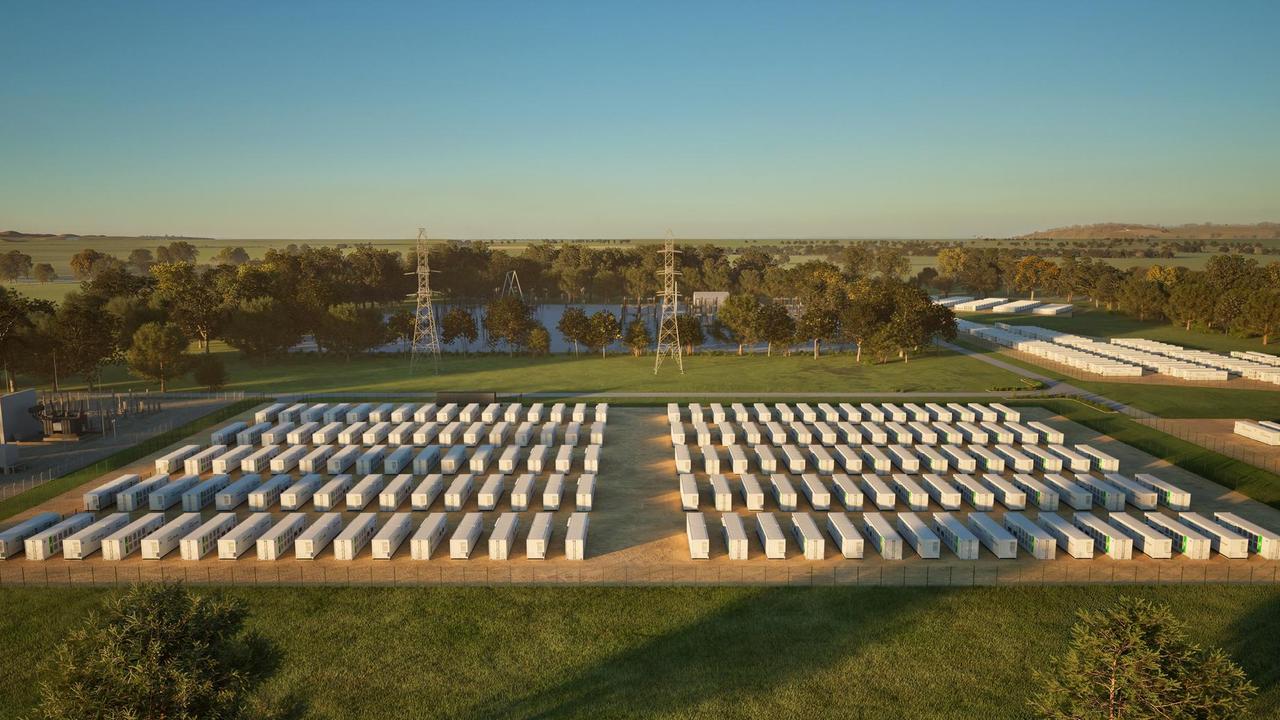Andrew Forrest’s Fortescue misses mark on earnings, dividend
Andrew Forrest-led Fortescue blames Donald Trump, European policymakers and the looming federal election as it thinks twice on green hydrogen projects.

Business
Don't miss out on the headlines from Business. Followed categories will be added to My News.
Fortescue has signalled more delays and cost blows out around its troubled Iron Bridge magnetite project as it continues to pull back from green energy projects.
Andrew Forrest-led Fortescue blamed US president Donald Trump, European policy uncertainty and the looming federal election in Australia for its latest second thoughts on green hydrogen projects.
The company said it was reconsidering the development timeframes for its green hydrogen project in Arizona and for a green hydrogen project in Gladstone in Queensland linked to its electrolyser manufacturing facility.
Fortescue Energy boss Mark Hutchinson also tempered expectations for the Holmaneset green ammonia project in the Norwegian fjords and the Pecem ammonia project in Brazil.
“We’re not going to bring them to the board until we really believe we’ve locked in the buyers as well,” he said.
“We’re having discussions with off takers. There’s uncertainty globally for them too and until we have a project which is economically viable, we won’t take those to the board.”

Fortescue announced last July that it was shedding 700 jobs and pulling back on green hydrogen. The company has never disclosed how many of the job losses were in green energy and Mr Hutchinson again refused to discuss staff numbers when questioned on the issue on Thursday.
Mr Hutchinson said the Trump administration was instructing federal agencies to pause grant payments under the Inflation Reduction Act and that had implication for its $US550m Arizona project.
“While we do remain confident in the long-term viability of green energy, we must be realistic about the current challenges the industry faces. Right now the world is in an uncertain place,” he said.
“This does include looking at timelines on the FID (final investment decision) projects we have previously announced. These changes are what happens when you have an unstable government policy which creates uncertainty for investors.”
The Fortescue share price plunged more than 6.2 per cent to $18.24 on Thursday on the back of weaker than expected results and dividends.
Although the interim dividend of 50 cents is down from $1.08 last year and lower than forecasts, Andrew and Nicola Forrest will still share in about $558.4m.
The separated couple between them control about 36.7 per cent of Fortescue stock.
The dividend dip came as Fortescue foreshadowed more delays in the $US3.9bn Iron Bridge mine in the Pilbara reaching nameplate capacity of 22 million tonnes a year.
Iron Bridge had been scheduled to hit that milestone in September, but Fortescue said that timetable was under review as it looked to make changes to the processing plant.
It is now almost two years since Dr Forrest, Fortescue’s executive chairman, declared first production at Iron Bridge and described it as the biggest relief of his career.
Perth-headquartered Fortescue’s first half profit fell 53 per cent to $US1.55bn, below consensus estimates of a $US1.8bn. Revenue fell 20 per cent to $US7.64bn and underlying earnings before interest, taxes, depreciation and amortisation tumbled from $5.9bn to $3.64bn.
Fortescue shipped a company record of 97.1 million tonnes of iron ore in the first half, but the average price for its hematite product fell 21 per cent year-on-year to $US85 a tonne and production costs increased slightly.
The company maintained full-year shipment guidance of 190-200 million tonnes, including 5-9 million tonnes from Iron Bridge, despite recent cyclone activity in the Pilbara that has also hit bigger rivals BHP and Rio Tinto.
Fortescue metals chief executive Dino Otranto backed Iron Bridge to eventually hit its straps after various setbacks in the past two years, including WorkSafe issuing improvement notices related to the management of dust with high levels of crystalline silica.
Analysts at Jarden highlighted possible “dividend stream pressures”, including costs around replacement of heavy mining equipment, decarbonisation and an increasing need to step up resource and reserve replacement drilling against the backdrop of the weak outlook on iron ore prices.
Guidance for FY25 energy capital expenditure is revised to $US400m (previously $US500m) reflecting reduced spend. Metals capitalexpenditure guidance was narrowed to $US3.5bn-$US3.8bn.
Citi analysts said the market would appreciate some moderation in energy division spending.
“That said, the market will want to see energy capex and opex cut further,” Citi said.
Originally published as Andrew Forrest’s Fortescue misses mark on earnings, dividend



